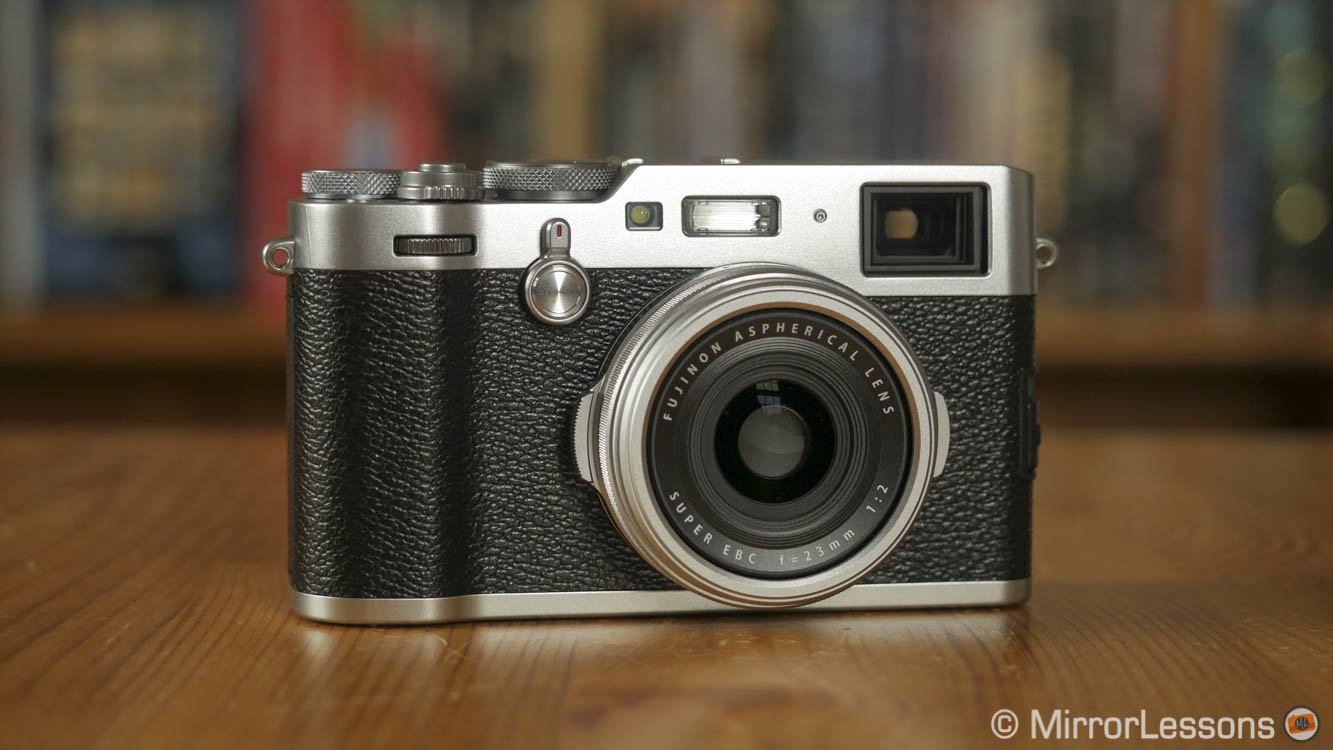I’ve always had a soft spot for the Fuji X100 series and despite its imperfections, it is still my favourite camera from the brand to date. So even though I knew I would be reviewing more or less the same camera once again, I was pleasantly surprised to see that the X100F – the fourth iteration in the line-up – is a nice upgrade, featuring not only the latest sensor and autofocus system but other welcome improvements.
Ethics statement: the Fujifilm X100F was loaned to us by one of our partners to conduct our review. We were not asked to write anything about the camera, nor were we provided with any other compensation of any kind. Within the article, there are affiliate links. If you buy something after clicking the link, we will receive a small commission. Don’t worry – prices remain the same for you. To know more about our ethics, you can visit our full disclosure page. Thank you!
Main Specs
- Sensor: 24 MP APS-C X-Trans III CMOS
- Lens system: Fixed 23mm f2 (35mm equivalent)
- Weatherproof: None
- Internal Stabilisation: None
- Autofocus: Hybrid with up to 325 points (7×13 and 13×25 grids selectable)
- Continuous shooting: 8 fps and 3 fps (AF-S and AF-C)
- ISO Sensitivity: 200 – 12800 ISO (pull 100, push 12800 to 51200)
- Shutter Speeds: 1/4000 to 30 seconds, up to 1/32000s with electronic shutter
- Viewfinder: Hybrid with 0.48in OLED 2,360k dots EVF (100% FOV, 0.65x magnification), Reverse Galilean OVF (92% FOV, 0.5x magnification)
- Rear monitor: fixed 3″ LCD (1040k dots)
- Movie recording: Full HD up to 60fps
- Built-in Flash: Yes
- Extra Features: WiFi, Panorama, Timelapse, Bracketing, Multiple exposure, Advanced filters, Silent mode, Digital teleconverter
- Dimensions: 126.5 x 74.8 x 52.4mm
- Weight: 469g (including battery and memory card)
- Firmware version: 1.01
Video Review
Below you can see the video review in the new 5-minute format we’ve begun using on our YouTube channel. It is quicker than our in-depth camera reviews yet provides all the most important information you need to know about the camera.
Summary of our findings
- Design and ease of use: Definitely a nice upgrade in comparison to the X100T. The new button layout on the rear as well as the addition of the AF Joystick enhance the user experience. The rear command dial is more precise (not as loose as the one on the X100T) and there is a second dial on the front. There are 7 custom buttons in total, and in addition to the Quick Menu, there is also the new menu system and My Menu page, so there is a lot of room for personalisation. The ISO/Shutter speed dial is the same as the one found on the X-Pro2. It can take some getting used to but it is also fun to use. The focus ring on the lens is larger and can work as a function ring for various settings.
- Image and video quality: it has the same 24MP X-Trans III sensor as the X-T2, X-Pro2 or X-T20, so no surprises here. You get great dynamic range and high ISO performance and the usual Film Simulation modes and their characteristic colour palette. The camera doesn’t suffer from purple flare / grid artefacts as much as the X-T2/X-Pro2.
- Autofocus: the X100F gets the same AF system found on the X-T2 and X-Pro2 (except for the AF-C Custom Settings). There are more AF points, as well as more options to control the AF area including Zone and Wide/Tracking. The camera is more responsive and face detection is more reliable. However the lens AF motor is still slow and can prompt the camera to mis-focus.
- Continuous shooting speed and buffer: the X100F can shoot up to 8fps with better buffer capabilities than its predecessor (5s at full speed with RAW files, 30s with JPGs).
- Extra features: there is a decent number of extra functionalities including Wifi, Panorama, Multiple exposure and bracketing modes. AE Bracketing is still limited to 3 shots (while the X-T2 got a much better upgrade) whereas the Panorama mode can produce ugly banding. The Digital Teleconverter crops the sensor to a 50mm or 70mm equivalent field of view but keeps the native 24MP resolution by upscaling the image. It works in JPG only and while the result isn’t bad, you lose some sharpness in comparison to the same operation in post with the RAW file.
- Video: There is no 4K option but the 1080p footage is better than previous X100 cameras (more detail, less aliasing). You have a dedicated video mode and the possibility to use a single AF point instead of just Multi.
Conclusion
The X100F is definitely a more interesting upgrade in comparison to what the X100T was to the X100s. You get the new 24MP sensor, as well as more refined controls with additional features such as the twin ISO/Shutter speed dial and the AF joystick.
The lens is still the same as the first X100 and is the only part of the camera that feels in need of an upgrade. The optical quality is still excellent with great sharpness across the frame from f/2 already, except at short distances where you need to stop down to f/4. The bokeh is decent but the AF motor feels slow and the camera doesn’t seem to be able to take full advantage of the great AF system as a result.
That being said, it is still one of the most lovely fixed lens compact cameras you can find on the market today. The design is gorgeous and it can easily become one of those cameras you carry around with you wherever you go.
Check the price of the Fujifilm X100F on B&H Photo
Sample images













